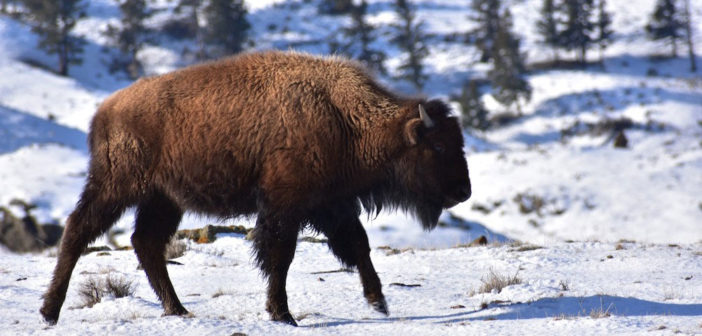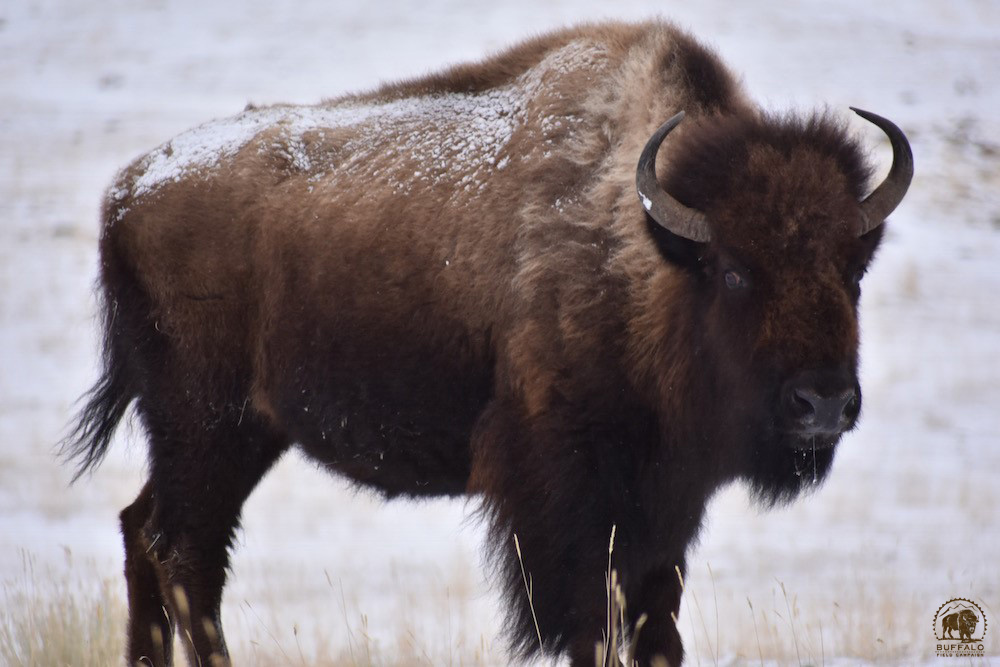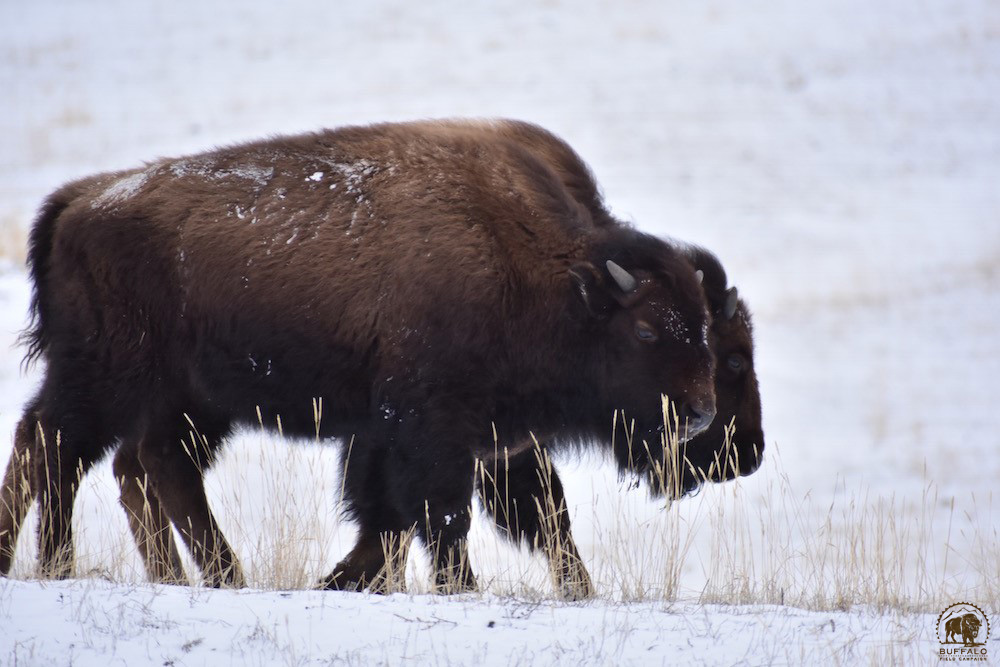Aldo Leopold, who many refer to as “the father of conservation,” once said, “A thing is right when it tends to preserve the integrity, stability, and beauty of the biotic community. It is wrong when it tends otherwise.” Clearly, the actions made by those involved with the Interagency Bison Management Plan qualify as the latter.
The wrong actions made by Yellowstone National Park and other bison managers took the lives of 458 of the country’s last wild buffalo this year. All those buffalo souls lost simply because livestock interests don’t want to share the land with the native bovines who hold ancient birthrights and sacred relationships with this place we call Montana. On the bright side, there are hundreds more that the government wanted to kill — up to 1,200 was their goal — that they didn’t get to lay hands on.
As of this writing, buffalo in the Gardiner Basin are leaving, heading deeper into the Park. Members from the northern herd are moving into the Blacktail Plateau where they will bring forth the next buffalo generation, while members from the central herd will make their way towards the Hayden and Madison Valleys, where they, too, will soon give birth. A few members from the Central herd have made it into the Hebgen Basin. We are so excited for their return; just seeing their tracks has made us giddy. Patrols have spotted others a little ways inside the Park who are likely headed this way as well. We have been lonely here on the West side in the absence of the buffalo and our hearts are bursting with joy to see and smell them again.
For the most part, here in the Hebgen Basin, the buffalo are safe this time of year. Unless they venture south and west of the Madison River, they will not be harassed or harmed by the Montana Department of Livestock; they will be able to give birth and raise their babies in peace, returning to their summer range and rutting grounds when they choose to. Our biggest concern right now is that they make it across the highway safely and we are on hyper-alert and ready to serve as buffalo crossing guards once that time comes. But, so few are coming. People all around town keep asking us, “where are they?” Even trips into the Park are not revealing the thousands that should be encountered.
Is it any wonder when Yellowstone and other buffalo managers have killed one-quarter of the population two years in a row? The agencies — especially Yellowstone — know the damage they are causing, yet they take no responsibility for their actions. They have convinced themselves that buffalo slaughter is normal, when the reality is that it is tragic, senseless, and ultimately insane. Things couldn’t be said better than BFC co-founder and campaign coordinator Mike Mease conveyed in an editorial he wrote for the newspapers:
“In the last two years, the Interagency Bison Management Plan (IBMP) has killed almost 1,200 bison in 2018, and 1,300 in 2017. That is about a quarter of the entire Yellowstone herd each year. All agencies involved in the slaughter know full well how unique and genetically important these bison are to the world. The impact of killing a quarter of all the bison in Yellowstone, two years in a row will only be known by our children. Of the two herds in Yellowstone, the central herd is now less than 1,000 (down from 3,500 in 2005) and that is a direct result of this management plan. At this time, Yellowstone makes no effort to find out which herd the bison that are killed come from in order to help the central herd rebound. At the IBMP meetings, Park Service staff always state that hunting should cease on the west side of the Park to help the central herd. Yet, they fail to teach by example as they send unknown numbers from the central herd to slaughter each year, taking no responsibility for their actions. The sad thing is, the Park Service and all their scientists know what they are doing is wrong; their actions cause cumulative negative impacts on the long term well-being of these animals. Yet the agencies carry on with business-as-usual, and now 17 years of management have taken its toll on the central herd.
We must remember that Yellowstone is not true bison year-round habitat. It is where the bison hid from humans to survive extinction. The Yellowstone plateau is high elevation land that gets extreme winters. Most animals must migrate out of Yellowstone in the winter to survive. They head to lower elevations where grass is more easily accessible and it is easier to live. The central herd are the direct descendants of the last survivors of the millions slaughtered and are our last remnant of this country’s truly wild buffalo. The bison that are being killed are the ones leaving the park, fulfilling their ancestral memory, which is being lost with every death. This is mad science and shows no concern for the long-term impacts of the government’s actions on bison.
The Buffalo Field Campaign is so concerned that in November of 2014, we filed for an Endangered Species Act (ESA) listing for the Yellowstone herds. Last year we won our first round in the courts. We hope that gaining ESA status will finally give these mighty sacred creatures the protection they need and deserve. What would Montanans do if this happened to elk? All concern is focused on bison, who have never transmitted the disease brucellosis, yet they continue to be blamed for spreading the disease to cattle out of the Yellowstone ecosystem. The truth is that the disease was brought here and transmitted to our wildlife by cattle.
It is time to do what is right for bison and treat them like we treat all other wildlife in Montana. Millions of acres of habitat have been opened up for elk in what the IBMP calls the brucellosis Designated Surveillance Area. This land is open to elk, so why not bison too? It is time Montana wakes up and stops this insane practice towards bison. The world is watching and is fed up with Montana’s use of federal tax dollars to kill our National mammal, a keystone species and an American icon.”
Yes, the world is watching — you are the eyes of the world and there are many things you can do to help put an end to this nefarious management scheme. You can take action to help strengthen the Endangered Species Act and get the wild buffalo of Yellowstone federally protected. You can take action to comment on the Gallatin National Forest’s Forest Plan Revision to help buffalo become recognized as a Species of Conservation Concern. You can contact Montana Governor Steve Bullock (governor@mt.gov) and urge him to veto a bill, HB 132, which aims to define wild buffalo out of existence, and also urge him to repeal state law MCA 81-2-120, which gives the Montana Department of Livestock authority over wild buffalo when they migrate into Montana. Last, but not least, you can join us on the front lines and stand with us for these gentle giants, learning from them what they need, experiencing their lives and learning their perspectives.
Some things haven’t changed, but many others have. We have created some phenomenal positive changes for the buffalo, but so much more needs to be done. As the buffalo teach us, we can never give up. They never have, and we never will either. Persistence, resistance, and endurance: these are just a few of the many gifts the buffalo bring. Thank you for being with us for wild buffalo!
Featured image: one of the United States’ last wild buffalo. Image credit Stephany Seay, Buffalo Field Campaign.







